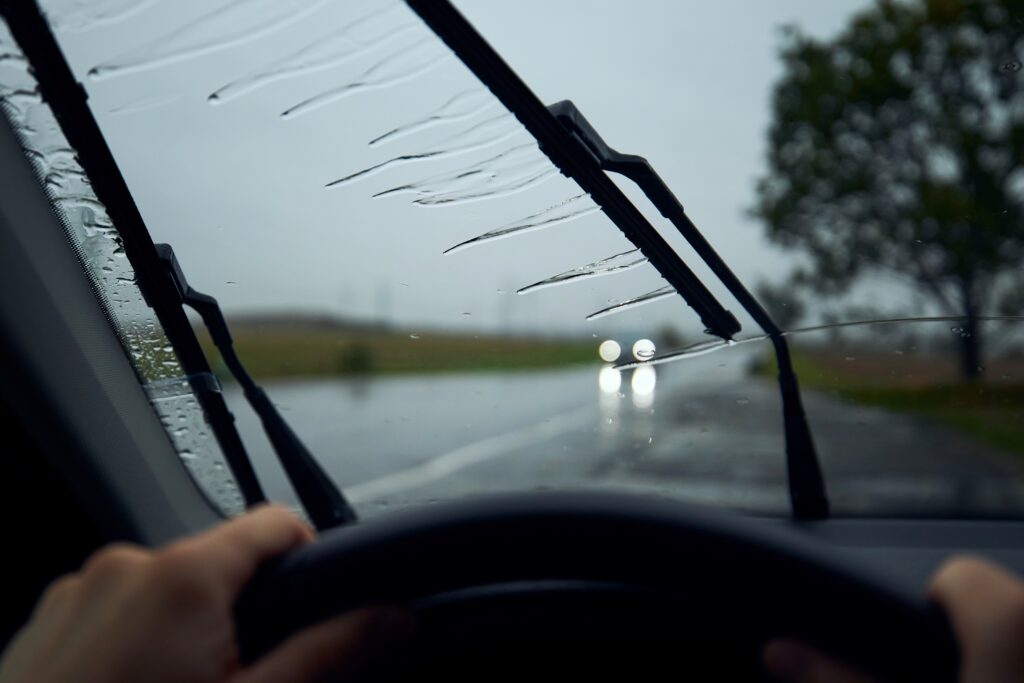
Ah, rain. You never know when it’s going to hit, and Miami gets plenty of it. An unexpected rainstorm can greatly increase your chances of needing collision repair. So, how can you drive more safely in the rain?
If Possible, Don’t
We’re not talking a few drops here, but one of those heavy downpours when you start expecting a cat or a dog (or maybe a frog) to land on your car. If it’s really pouring it down, then you may want to wait until it stops raining. Check the weather radar to see how long the storm is expected to stick around.
It’s better to be late than drive when you aren’t comfortable. If the weather worsens, or if your car is full of humidity despite ventilation, consider pulling over and waiting until it eases off.
Slow Down
If the road is wet, the road is slippery. If it’s raining hard, visibility is reduced. Make sure to at the very least stick to posted speed limits and slow down further if you are having difficulty seeing or feeling as if your car is sliding.
By reducing speed, you can avoid heavy braking. Braking hard in the wet can cause a spin. Also make sure to keep a safe distance between you and the car in front.
Turn off Cruise Control
Cruise control is great. Until you need to react quickly. Keep your cruise control turned off in wet conditions, and make sure you concentrate absolutely on driving. (It’s also even more important than normal not to talk, text, or do anything else that might distract you from the road. Cruise control can even cause you to lose control of your vehicle by not allowing you to reduce speed when you notice minor loss of traction.
Turn on Lights
If your windshield wipers are on, your lights should also be on. Headlights help other people see you in heavier rain. Also be careful and make sure to turn your windshield wipers on when you need them; some drivers forget to do so if the rain is very light. Note: If your car is fitted with fog lights, do not use them when it is rainy. The extra bright light will cause a sparkling effect that reduces everyone’s visibility.
Give Large Vehicles a Wide Berth
You should be giving everyone extra space in the rain, but be particularly careful about getting too close to large trucks and buses. The spray from their tires hitting your windshield can cause visibility and other problems.
Plan Your Route
Basic fact: Some roads flood. You need to learn which ones those are and take a different route when it is wet. If you do see standing water or a flood, don’t drive through it. Driving through standing water can cause your car to hydroplane and you to lose control. Floods can also hide sinkholes and road subsidence.
Drive in the Right Place
Drive in the middle lane when possible. If there is another vehicle of similar size in front of you, drive in their tire tracks (but don’t get too close). If you watch auto racing, they talk about the “racing line” where everyone drives because of better traction. It’s the same theory here. Other people’s tires will dry out the road and make a dry line where you can drive.
Learn How to Handle a Skid or a Hydroplane
Learn what to do if your car does skid. If your car skids, steer in the direction you want to go and absolutely do not slam on the brakes. In converse, if you feel your car hydroplane, ease off the gas and avoid steering if possible. Just let your car go until it regains contact with the road.
Learn what to do if your car does skid. If your car skids, steer in the direction you want to go and absolutely do not slam on the brakes. In converse, if you feel your car hydroplane, ease off the gas and avoid steering if possible. Just let your car go until it regains contact with the road.
